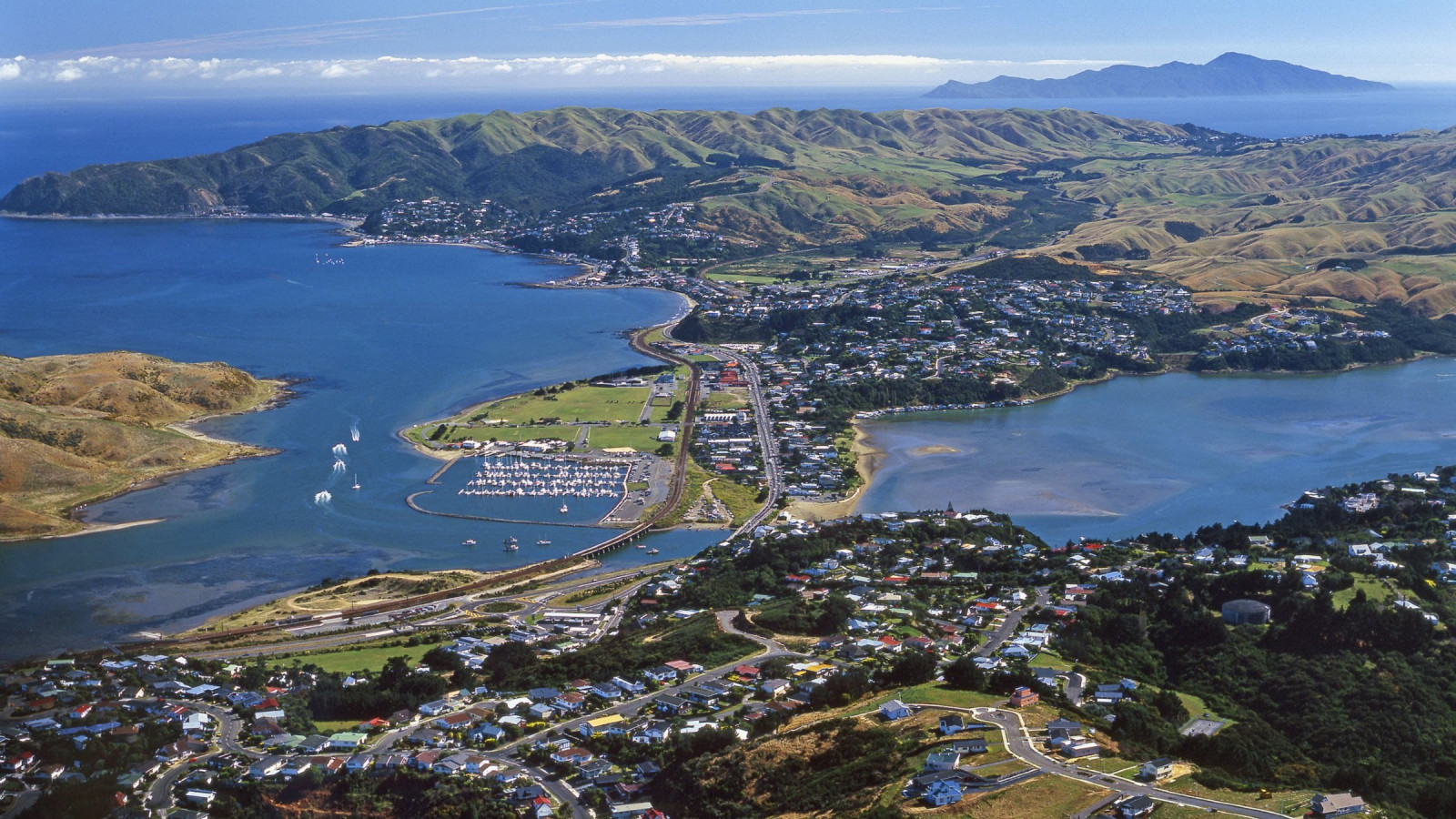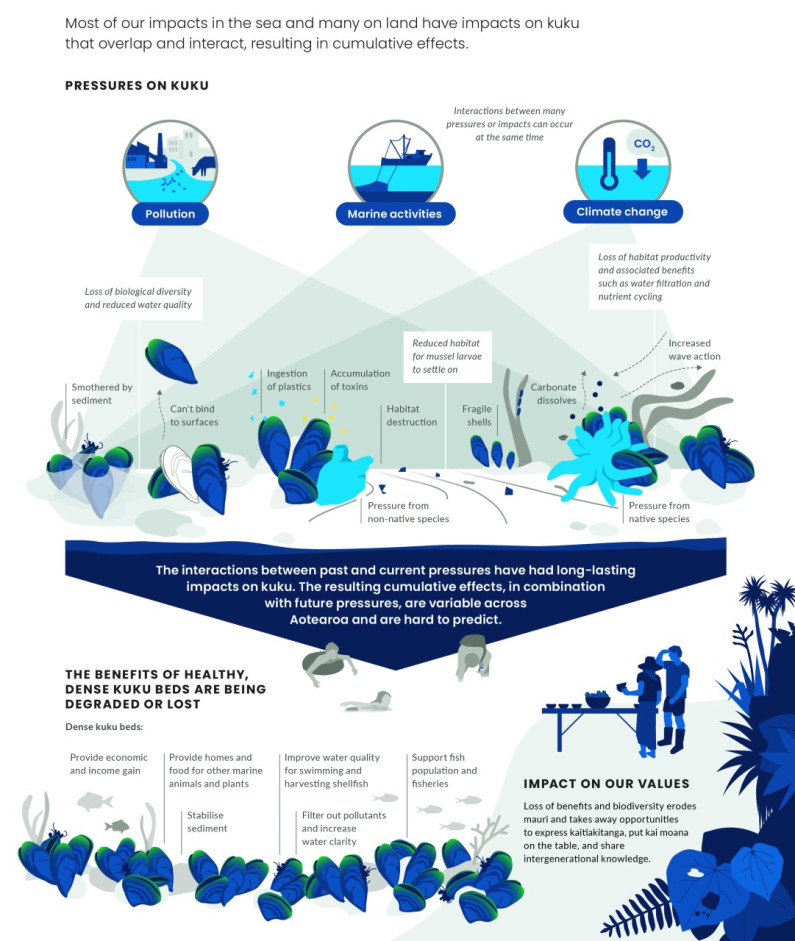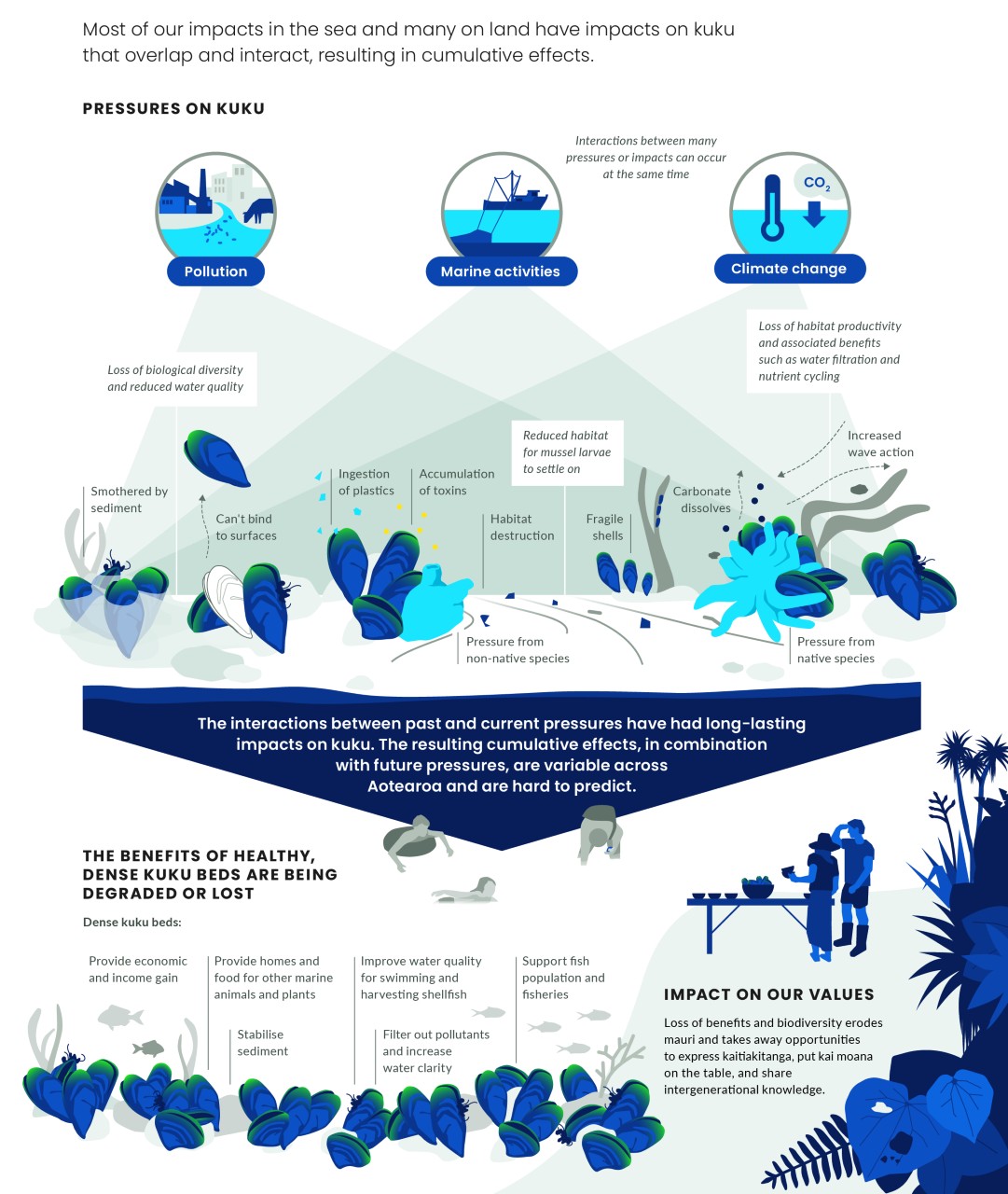All our activities put cumulative stress on the marine environment


Cumulative effects are one of the most urgent and complex problems facing our marine environment. In some instances, when effects overlap they can offset each other and reduce the overall impact, but more often effects compound, or result in unexpected impacts (Davies et al, 2018).

Image: Colin Monteath, Alamy Australia
This report covers four priority issues to give a deeper understanding of the complexity within each issue. However, in reality, the effects of our activities and natural stressors overlap. Issues therefore need to be considered together rather than in isolation.
The consequences of cumulative effects are highly variable. They are determined by:
The complexity of our environment and patchy, long-term observations of parts of the system mean a full understanding of the impacts of cumulative effects is lacking (Larned et al, 2018). National data on the impacts from cumulative effects is scarce.
Understanding the scale and characteristics of these effects is complicated by the natural capacity of a species or habitat to respond – for example, they may respond or recover at different rates or be impacted by cumulative effects (Davies et al, 2018). Measuring the impact of cumulative effects requires an ability to detect change and understand tipping points.
New Zealand is making progress in understanding cumulative effects. Models are being developed that allow the effects of several pressures (such as catchment changes and fishing pressure) to be considered together. New technology, including continuous fixed-monitoring buoys, drones and cameras, along with coordinated national monitoring, have the potential to monitor the marine environment more cost effectively.
Integrating this data with local information and mātauranga Māori can provide holistic, place-based knowledge that is crucial to understanding cumulative effects. Connections between pressures are not new from a te ao Māori perspective, where even small shifts in the mauri of any part of the environment would cause shifts in the mauri of related parts of the environment, and eventually the wider environmental system (Environs Holdings Ltd, 2011).
The final image (below) in the story of kuku, the green-lipped mussel, shows that while we can measure individual effects, an understanding of cumulative effects when pressures overlap is limited. This considerable knowledge gap constrains our understanding of further impacts and where thresholds and tipping points for kuku may occur. The example from this single species illustrates the complexity of cumulative effects that occur more widely in our marine environment.


Read the long description for All pressures that affect kuku
Most of our impacts in the sea and many on land have impacts on kuku that overlap and interact, resulting in cumulative effects.
Impacts between many pressures or impacts can occur at the same time.
Smothered by sediment; Loss of biological diversity and reduced water quality; can’t bind to surfaces; ingestion of plastics; accumulation of toxins; pressure from non-native species; habitat destruction; reduced habitat for mussels to settle on; pressure from native species; fragile shells; loss of habitat productivity and associated benefits such as water filtration and nutrient cycling; increased wave action.
The interactions between past and current pressures have had long-lasting impacts on kuku. The resulting cumulative effects, in combination with future pressures, are variable across Aotearoa and are hard to predict.
Dense kuku beds:
Provide economic and income gain; provide homes and food for other marine animals and plants; stabilise sediment; improve water quality for swimming and harvesting shellfish, filter out pollutants and increase water clarity; support fish population and fisheries.
Loss of benefits and biodiversity erodes mauri and takes away opportunities to express kaitiakitanga, put kai moana on the table, and share intergenerational knowledge.

All our activities put cumulative stress on the marine environment
October 2019
© Ministry for the Environment